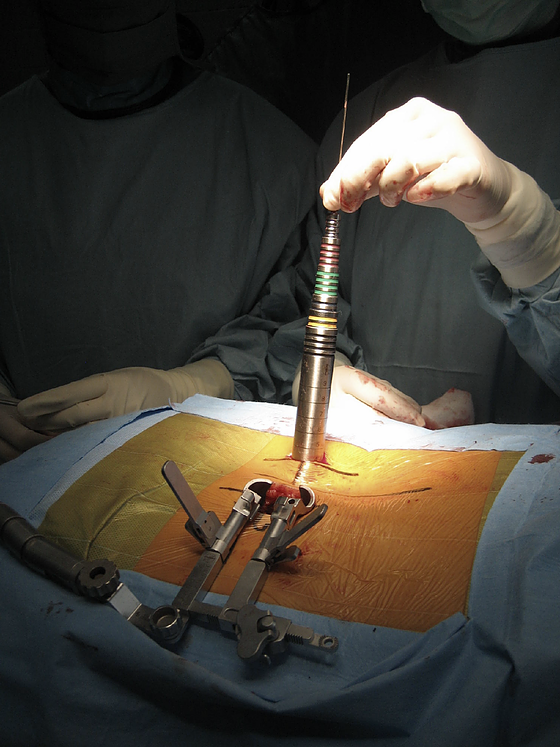
MIS-Transforaminal Lumbar Interbody Fusion
A minimally invasive transforaminal lumbar interbody fusion, or TLIF, is performed to remove a damaged disc in the lumbar (lower back) area of the spine. It can also help to stabilize the spine and reduce associated back and leg pain by fusing two or more vertebral bones together. Typically, this procedure will be recommended to treat degenerative disc disease. The patient will lie prone under general anesthesia, and the smallest possible incision will be made directly above the targeted area of the spine. This allows the surgeon the easiest access to the damaged disc with the least amount of trauma to surrounding muscles and tissue.
Some of the benefits of a minimally invasive TLIF procedure include:
- Relieved back and leg pain, allowing patients to return to their daily life, work, and activities much sooner than traditional surgery.
- Minimally invasive removal of damaged disc(s) and insertion of bone graft material for sturdy fusion between two vertebrae.
- Dramatically improved quality of life post-surgery.
Our Treatment Approach
Minimally invasive TLIF procedures offer many advantages over traditional open surgery and can be performed by our highly skilled spine surgeons. There is an intricate set of steps involved in this treatment, which typically include:
- Our surgeons start by inserting a series of dilators between the muscle fibers to separate them and create a clear channel to the spine without additional trauma.
- A tubular working portal is then inserted in place of the dilators, and an endoscope (tiny camera) and advanced surgical tools are placed inside the incision.
- If necessary, bone at the rear of the vertebrae will be removed to allow direct access to the damaged disc. The disc will then be carefully removed, leaving only its wall in place.
- A cage embedded with bone graft material is put into the space formerly occupied by the disc, encouraging a bone bridge to form between the two vertebrae and effectively fuse them together.
- The overall end goal of this minimally invasive procedure is to relieve painful pressure on the nerve roots and greatly improve the patient’s quality of life.
Oftentimes, percutaneous pedicle screws and rods may need to be anchored to the vertebral bodies for stability and further bone graft growth encouragement. Our dedication to the latest advances in minimally invasive surgery means that patients generally experience faster recovery times, less blood loss, and less trauma to surrounding areas.
